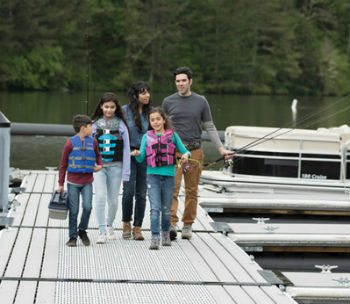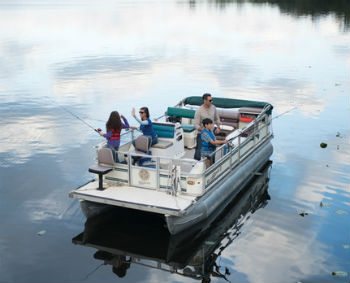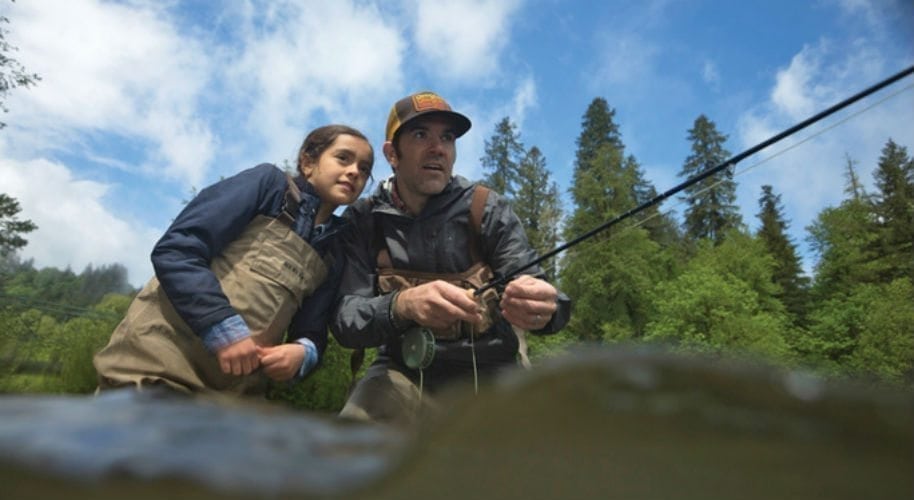Believe it or not, fishing and boating have a profound impact on personal well-being. Time spent in the outdoors has been proven to lower anxiety, and boating is ranked in the top three stress-relieving activities. The fact that only 37.5 percent of Americans use the outdoors to help unwind presents a tremendous challenge and opportunity for outdoor organizations to increase participation in outdoor activities and help improve the health of the entire nation. Of course, with 3.5 million miles of rivers in the United States, there are plenty of opportunities to get out on the water.
 But the benefits go well beyond just personal health. Every time a fishing license or boat registration is purchased, the funds go directly toward conservation programs that ensure things like healthy fish populations. Additionally, an excise tax on fishing and boating equipment and small engine fuel also helps fund critical conservation programs. In all, anglers and boaters contribute around $1.5 billion to conservation programs annually.
But the benefits go well beyond just personal health. Every time a fishing license or boat registration is purchased, the funds go directly toward conservation programs that ensure things like healthy fish populations. Additionally, an excise tax on fishing and boating equipment and small engine fuel also helps fund critical conservation programs. In all, anglers and boaters contribute around $1.5 billion to conservation programs annually.
This unmistakable link between fishing, boating, and conservation means that sustaining and growing the number of anglers is critical to the future of fishing and boating. That’s why the Recreational Boating & Fishing Foundation (RBFF) has kicked off a campaign to increase fishing participation from the current level of 47 million to 60 million anglers annually. This goal, known as “60 in 60,” is working to unite the fishing and boating industry to elevate the customer experience through effective recruitment, retention, and reactivation (R3) practices. On top of the conservation benefits, reaching this goal would mean an additional $35 billion per year being contributed by 14 million new anglers and annual spending of $10 billion being contributed by 7.5 million new boaters.
 Technology has become a big part of fishing – from fish finders to social sharing. And while RBFF’s “Take Me Fishing” brand promotes fishing and boating as a way for individuals, families, and friends to disconnect with technology and reconnect with nature and each other. RBFF also realizes tech is critical to learning how and where to fish and planning your outing. However, one of the main ways RBFF is working to achieve this on the consumer front is with the online Take Me Fishing #FirstCatch campaign. The national media initiative encourages consumers to reconnect with nature by going fishing and/or boating and to share the experience with the world. Whether it’s the first of the day, season, or lifetime, consumers are spreading the joys of fishing and boating with #FirstCatch throughout the United States. Because, while it’s important to decompress, RBFF understands the power of technology in today’s world.
Technology has become a big part of fishing – from fish finders to social sharing. And while RBFF’s “Take Me Fishing” brand promotes fishing and boating as a way for individuals, families, and friends to disconnect with technology and reconnect with nature and each other. RBFF also realizes tech is critical to learning how and where to fish and planning your outing. However, one of the main ways RBFF is working to achieve this on the consumer front is with the online Take Me Fishing #FirstCatch campaign. The national media initiative encourages consumers to reconnect with nature by going fishing and/or boating and to share the experience with the world. Whether it’s the first of the day, season, or lifetime, consumers are spreading the joys of fishing and boating with #FirstCatch throughout the United States. Because, while it’s important to decompress, RBFF understands the power of technology in today’s world.
The great news is that RBFF is having an impact. Fishing is the number two adult outdoor activity behind jogging, and 2.5 million new participants tried fishing for the very first time in 2016. The future of fishing and boating is looking bright, but it will take a focus on the latest technology to keep anglers and boaters engaged for years to come.
By David Rodgers
The Recreational Boating & Fishing Foundation (RBFF) has kicked off a campaign to increase fishing participation from the current level of 47 million to 60 million anglers annually.
Images Courtesy of RBFF










